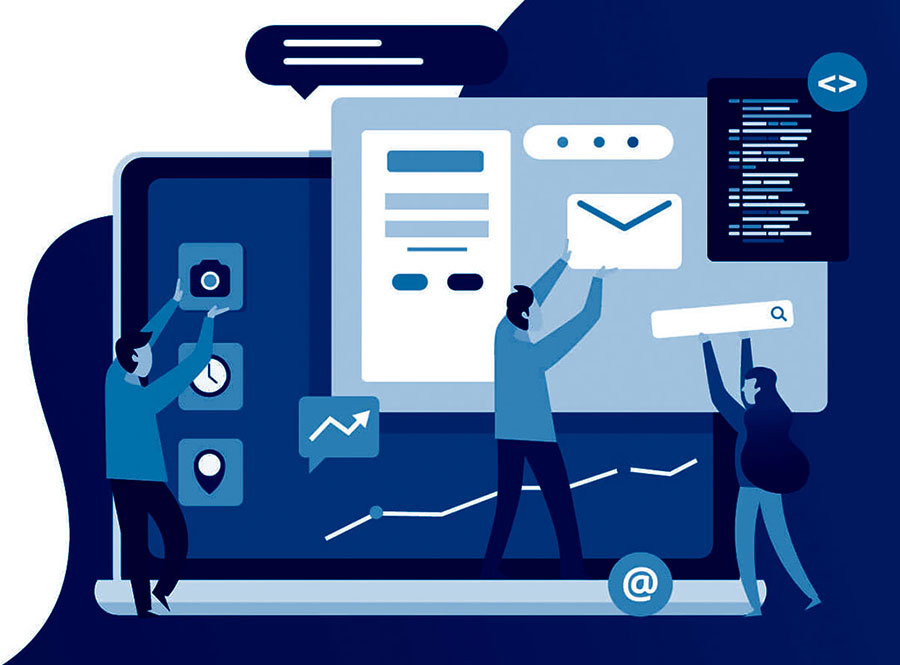Website
The construction of an Internet website includes the collection and processing of information, visual and audio material (scanning and digitizing images, sounds and videos, compressions, etc.). It also requires focus on the creation of graphics (prototypes - animations), the construction of logos and the creation and application of Cascading Style Sheets (CSS). Furthermore, it includes the study, programming and creation of types of functions such as data bases, forms, competitions, games, case studies, Java applets, flash. Special techniques Real video, Real audio, special applications such as online links, etc.
In general, building a website involves a combination of creativity, strategy and technical expertise.
Here is an overview of the key elements to consider:

- Purpose and objectives:
We determine the purpose of the website—is it for business, personal portfolio, e-commerce or informational blog; Clearly defining goals helps shape the design and content. - Design and Layout:
We choose a clean, user-friendly layout that reflects the brand identity. Modern websites often prioritize minimalism, intuitive navigation, and responsive designs that adapt to different devices. - Content Creation:
High-quality, relevant content is crucial. Include engaging text, images, videos, and call-to-action buttons to connect with your audience. - SEO Optimization:
We improve visibility with optimized titles, keywords, meta descriptions, and fast-loading pages for higher search engine rankings. - Testing and Development:
We test the performance, compatibility, and security of the website before we go live. We fix any glitches to ensure a smooth user experience. - Maintenance:
A website needs regular updates, security checks, and fresh content to stay relevant and engaging.

- Prioritize user experience (UX):
Make sure your website is intuitive and easy to navigate. Use clean menus, clickable buttons, and an accessible design for all users, including those with disabilities. - Responsive Design:
Design your website to adapt seamlessly to different screen sizes, from desktops to smartphones. - Visual Consistency:
Maintain a consistent look with a consistent color palette, typography, and branding across all pages. - Fast loading times:
Optimize images and reduce unnecessary scripts to improve site loading speed. Slow sites turn users away. - Minimalism and Clarity:
Avoid clutter. Keep content organized and concise with plenty of white space for readability. - Call to Action (CTA):
Make buttons and links for actions (e.g. "Sign Up" or "Buy Now") stand out with contrasting colors and strategic placement. - SEO-Friendly Design:
Use structured data, alt text for images, and appropriate headlines to improve visibility in search engines. - High-quality content:
Include engaging, accurate, and relevant content. Consider multimedia, such as video or animations, to supplement text. - Secure and reliable:
Implement SSL certificates, display privacy policies, and ensure secure payment gateways, if available. - Test regularly:
Conduct usability tests and check for broken links or errors to ensure a flawless experience for visitors.
Here we build online presentations, simple or dynamic. The knowledge and experience of our executives ensure the creation of functional and easy-to-use websites that fully meet the needs and requirements of our clients.








